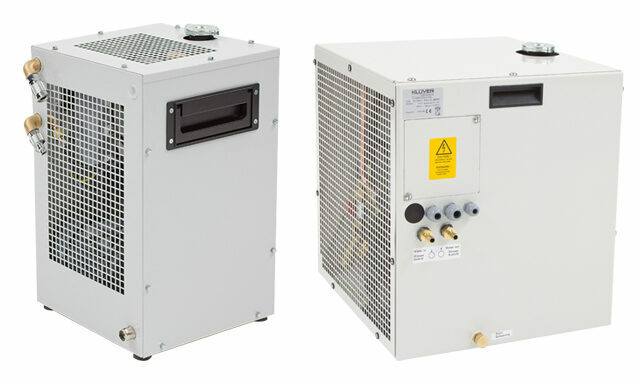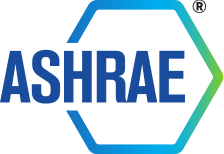
Laird Thermal Systems provides robust liquid cooling solutions (LCS) for many of the temperature-critical applications found in the medical, analytical, industrial, and semiconductor markets.
With cooling capabilities from 100 watts to more than 25,000 watts, their LCS systems are designed to maximize temperature stabilization at above, below or equal to ambient temperature. Service life expectations can exceed more than 20 years in the field.
Why Use Liquid Cooling Systems
- High heat pumping capacity
- High heat flux density
- Small form factor
Liquid cooling systems dissipate a large amount of heat in a densely packed electronic environment.
Maximum operational life is required to keep system maintenance and repair downtime to a minimum. Temperature stabilization has especially become critical, as next-generation systems require more precise temperature control. Liquid cooling systems are self-contained units that recirculate a coolant to a predefined temperature set point.
There are two types of liquid cooling solutions:
- Liquid heat exchanger systems chill the coolant in a liquid circuit to ambient temperature. This system consists of a pump to circulate coolant, a liquid heat exchanger to dissipate heat, and a liquid circuit to transfer coolant from the heat source to the liquid cooling system.
- Liquid Chillers (recirculating chillers) encompass a compressor system instead of a liquid heat exchanger assembly. It is used to cool the coolant to well below ambient and dissipate heat to the outside environment.
Additional features can easily be included to add temperature control, variable flow control, bypass control, coolant filtration and electronics in order to meet unique attribute requirements.
Laird Thermal Systems’ liquid cooling systems are used in a wide range of healthcare diagnostics & treatment, industrial instrumentation and semiconductor fabrication applications. While Laird Thermal Systems focuses on designing the optimal liquid cooling solution, customers can focus on designing a better end instrument.
All products are manufactured in an ISO 9001 and ISO 14001 certified facility and are built to meet the needs of strict process control requirements found in many of the medical, industrial, and semiconductor industries. All parts are procured from strategic suppliers with a proven track record of supplying highly reliable components and offering strong design support for customization. Laird Thermal Systems also offers after-sales service support to repair or replace units that have been in the field for more than two decades.
Liquid cooling systems are unique to the thermal management market in that they use a coolant to transfer heat. Liquid cooling systems have several advantages over conventional air-cooled systems, such as:
- High heat pumping capacity
- High heat flux density
- Heat routing
- Rapid cool down
- Lower noise
Turn-key Capabilities
The optimal liquid cooling solution is often a custom configuration. Laird Thermal Systems has more than 45 years of experience in the design, manufacture, and servicing of custom liquid cooling systems for various high-end markets.
Our experienced engineering team designs cooling systems that are compatible with water, water glycol, transformer oil, or various corrosion prohibitors. Liquid cooling systems can also be quite complex and require the temperature control of multiple liquid circuits or multiple pressure drop settings in order to accommodate low and high-pressure conditions. Laird Thermal Systems has experience designing both systems and can integrate many unique attributes into a liquid cooling system, such as:
- Cooling capacity (up to 200 KW)
- Variable pump capacity
- Thermal control of multiple liquid circuits
- Coolant filtration
- Variable flow control
- PID temperature control
- High-temperature stability
- High Coefficient of Performance (COP)
- Durability by hot gas bypass control
- CFC-free refrigerants
- Stainless steel heat exchanger
- High operational temperatures
- Flow monitoring
- Level switching
- Fault signal potential-free
- Maximum pressure limit
- Custom input/output fittings and housing configuration
Recirculating Chillers
Recirculating systems use a compressor to force a refrigeration gas through a condenser in order to change its phase to a liquid. The liquefied refrigerant is then recirculated through an evaporator, where energy is absorbed from the coolant being recirculated to the critical process and it is vaporized again.
Nextreme Recirculating Chiller Platform
The Nextreme Recirculating Chiller platform is the next generation of recirculating chillers that feature premium components at a mid-level price. The platform features high-quality components, environmentally friendly R513A refrigerants, low-noise designs, and a user-friendly operation for reliable, precise temperature control of analytical, medical, and industrial equipment.
The Nextreme Chiller line is designed to cool well below ambient temperature and dissipate heat away from thermally sensitive equipment. It comes with several standard features and additional options allow for application-specific configurations.
- Premium features at a mid-level price
- Environmentally friendly R513A refrigerants
- Low noise operation
- Lower ambient heat output
- Reduced energy consumption
Liquid Heat Exchangers
Laird Thermal Systems offers three types of liquid heat exchanger systems. Standard cooling capacities range from 500W to 5000W. However, custom solutions have been designed to remove up to 40 KW of heat. Standard heat transfer configurations are either Liquid‐to-Air or Liquid‐to-Liquid systems. All systems are designed to operate using either water, water with glycol (antifreeze), or oil as a coolant.
Water Cooled Heat Exchangers
Water-cooled systems (WL/LA and WW Series) are designed to circulate water or a water-glycol (antifreeze) mixture and keep the temperature of the coolant at or near ambient. The WL Series is a recirculating liquid-to-air heat exchanger that offers a dependable, compact performance by removing large amounts of heat from a liquid circuit. The coolant is re-circulated using a high-pressure pump to assure maximum flow rate. Heat from the coolant is absorbed by a radiant heat exchanger and dissipated into the ambient environment using a brand-name fan.
Liquid-to-Liquid systems use facility water as a hot side heat dissipation mechanism, which increases the cooling capacity while maintaining the form factor. The WW Series systems are designed to operate using water as coolant.
- Cooling to ambient
- High heat pumping capacity
- Compact form factor
- Long life operation
Oil Cooled Heat Exchangers
Oil cooled systems (OL and OW Series) are designed to circulate transformer oil and are used in applications where the temperature at the heat source exceeds the operational temperature limit of water-based coolants, or when special insulating properties are required within the coolant loop. The OL Series is a recirculating liquid to air heat exchanger that offers dependable, compact performance by removing large amounts of heat from a liquid circuit. The coolant pump assures maximum flow rate. The coolant is recirculated using a high-pressure pump to assure maximum flow rate. Heat from coolant is absorbed by a heat exchanger and dissipated into the ambient environment using brand name fan.
The OW Series uses facility water as a hot side heat dissipation mechanism, which increases the cooling capacity while maintaining form factor. The OW Series system is designed to operate using oil as coolant.
- Cooling to ambient
- High heat pumping capacity in smallest form factor
- Long life operation





